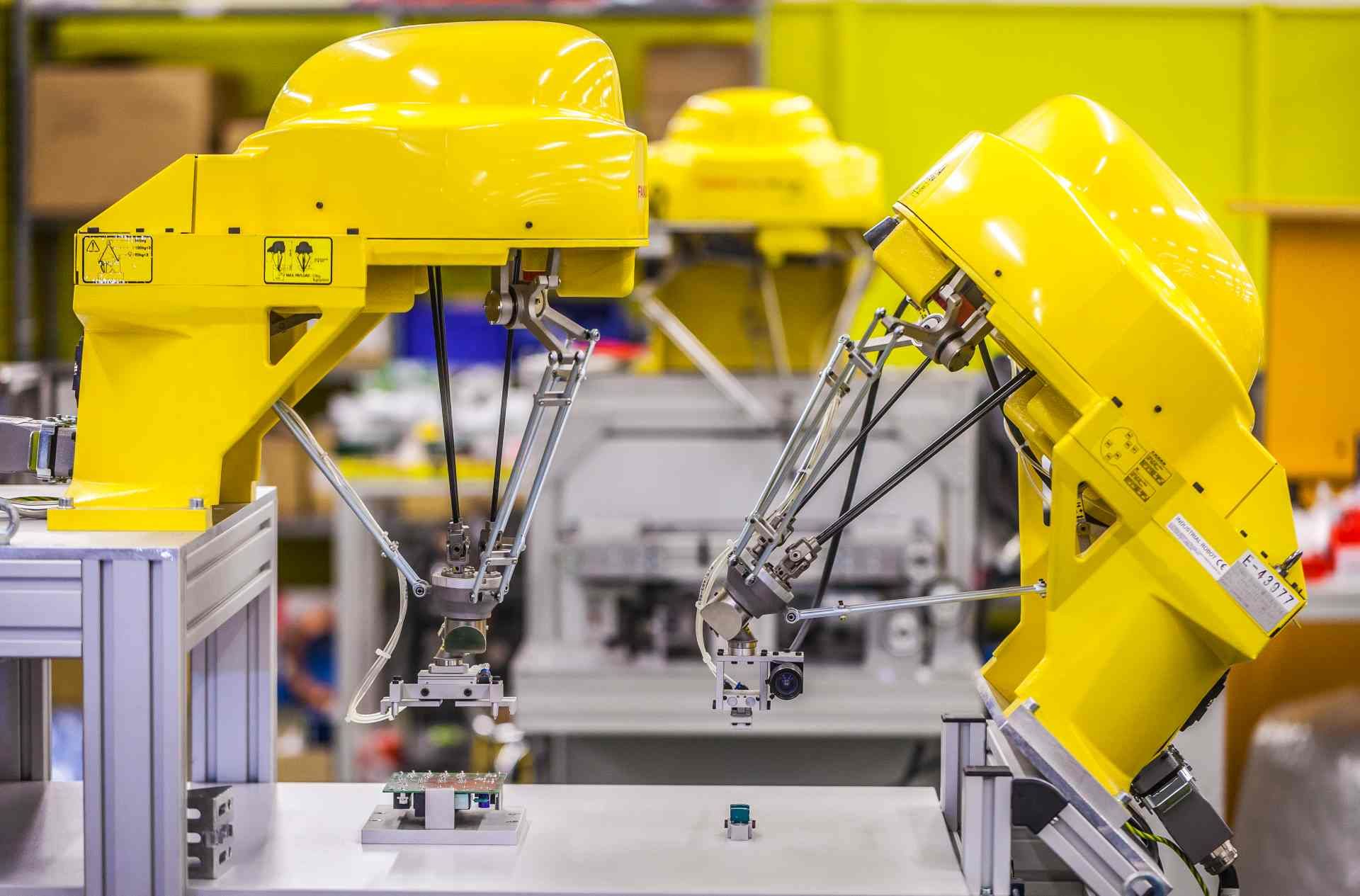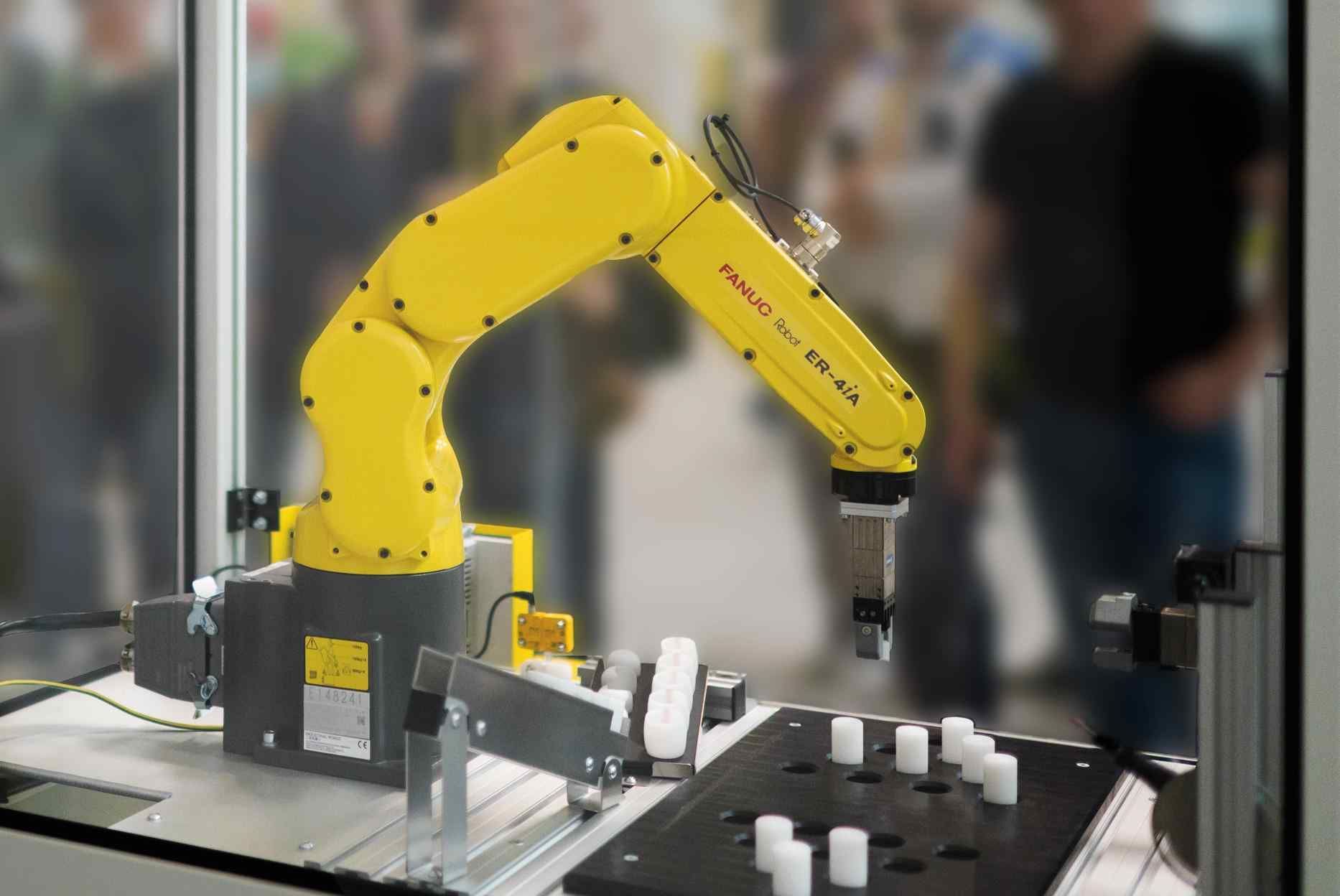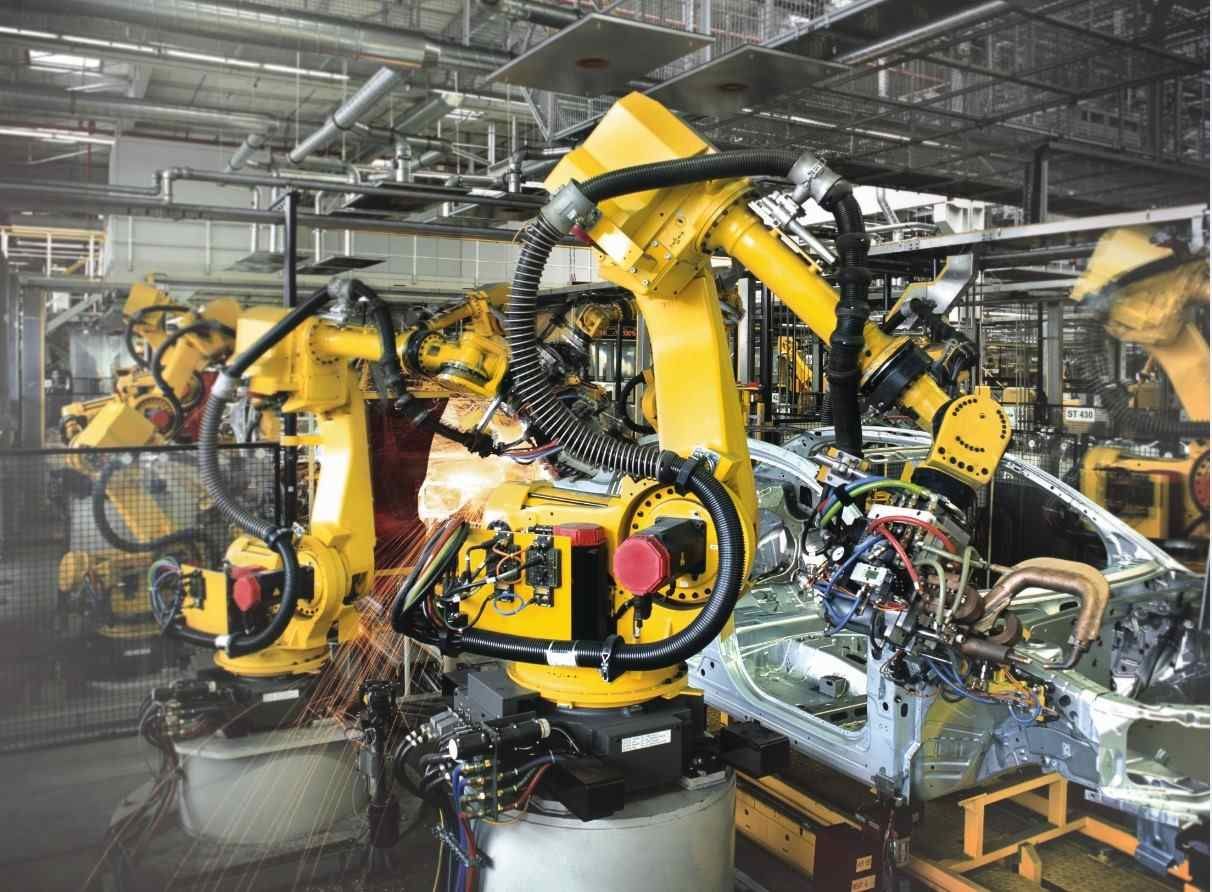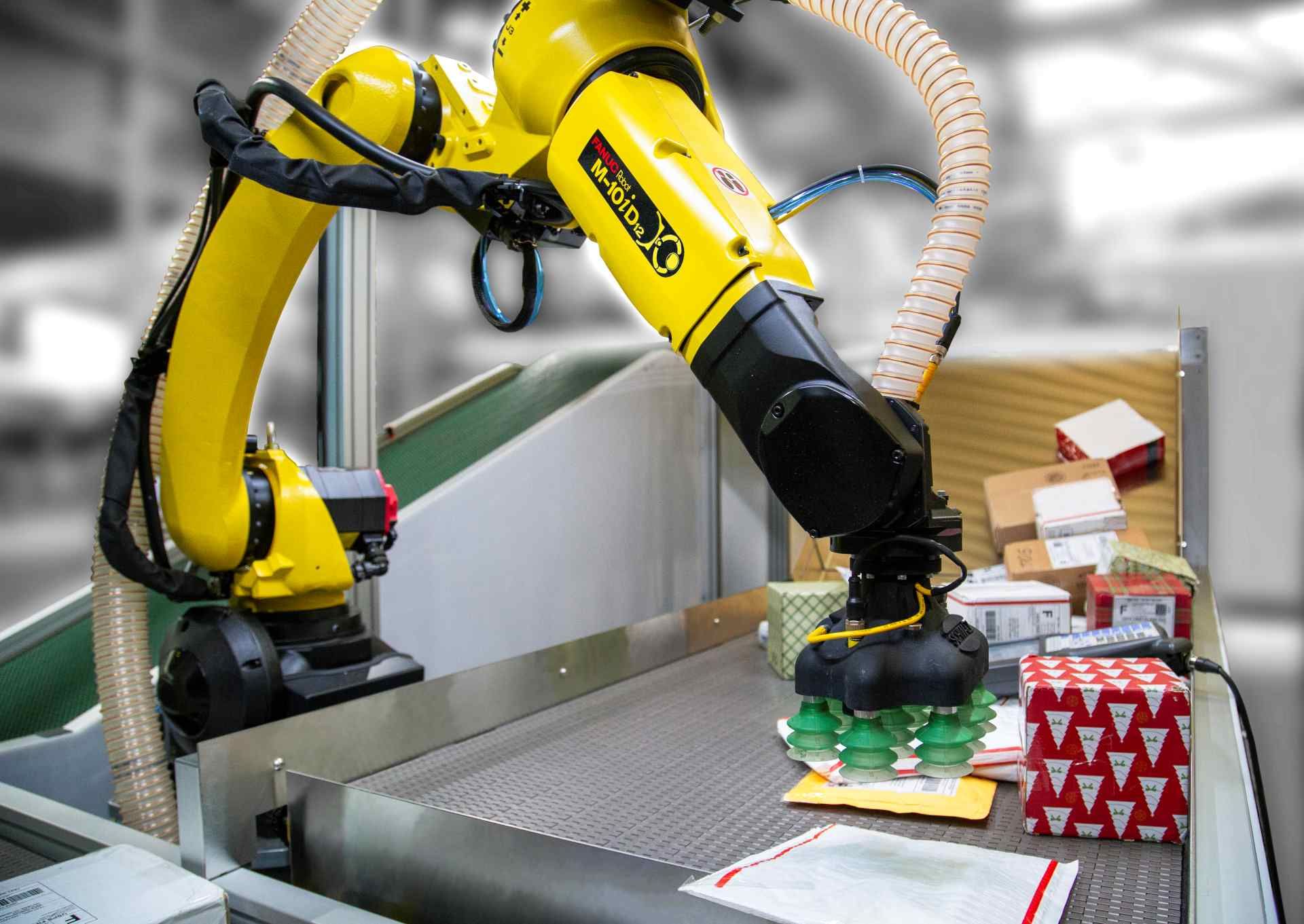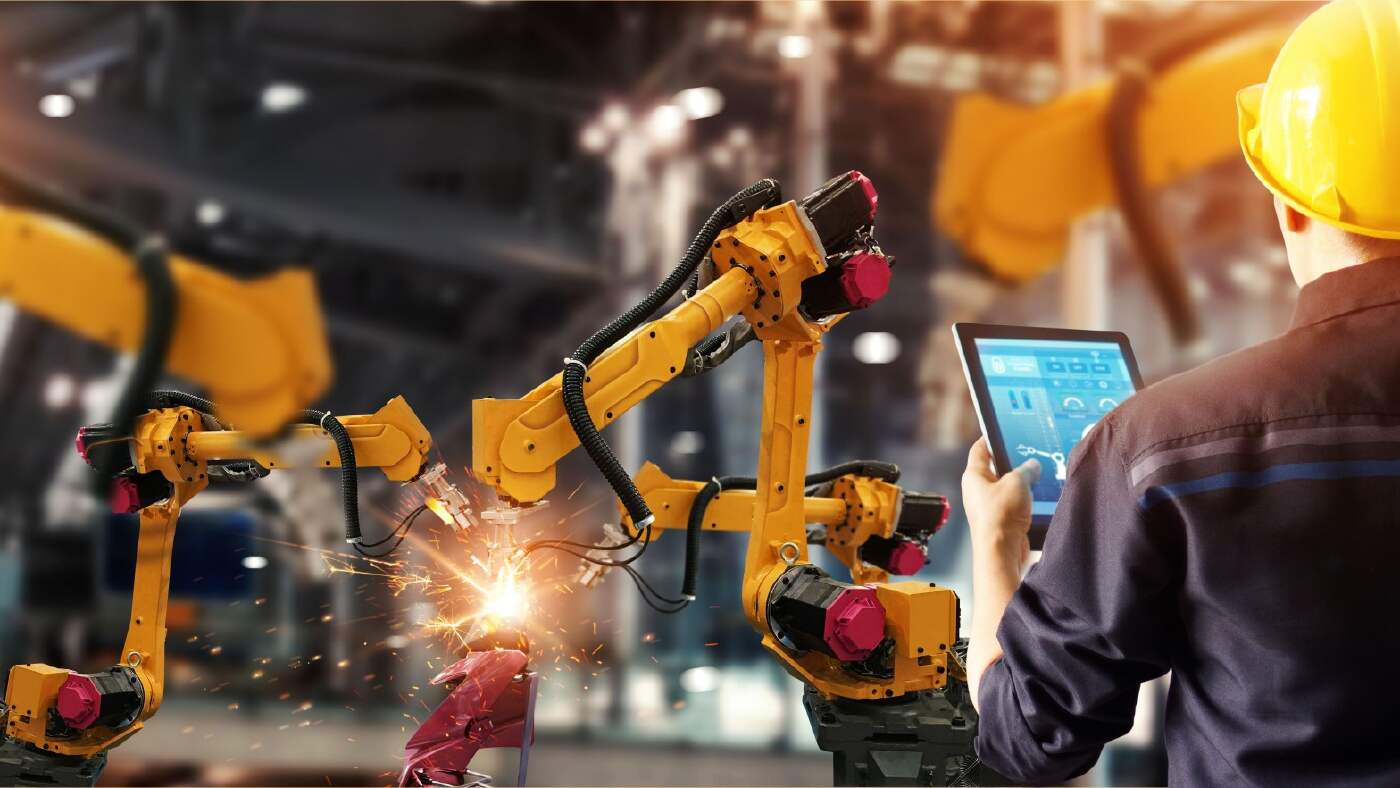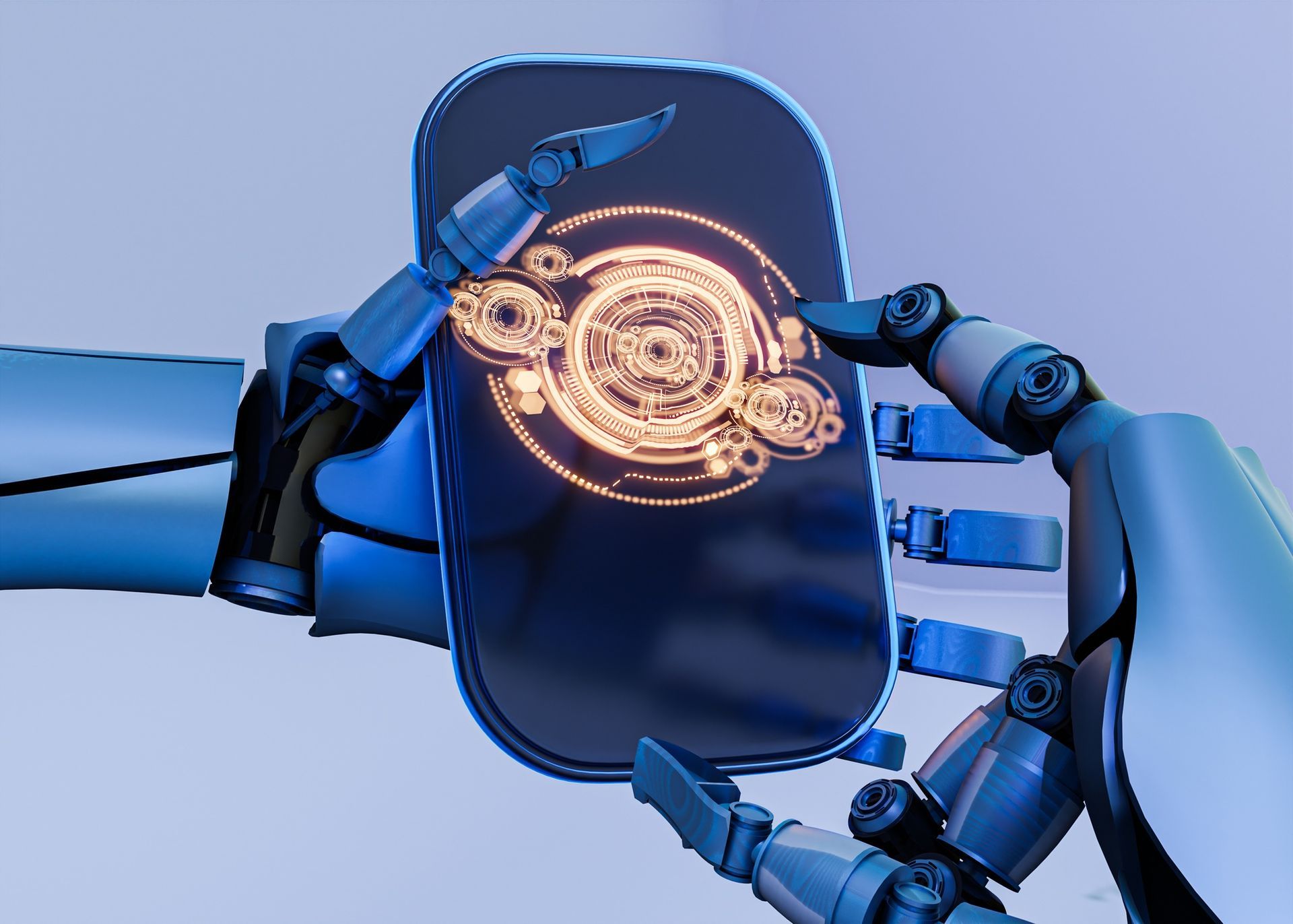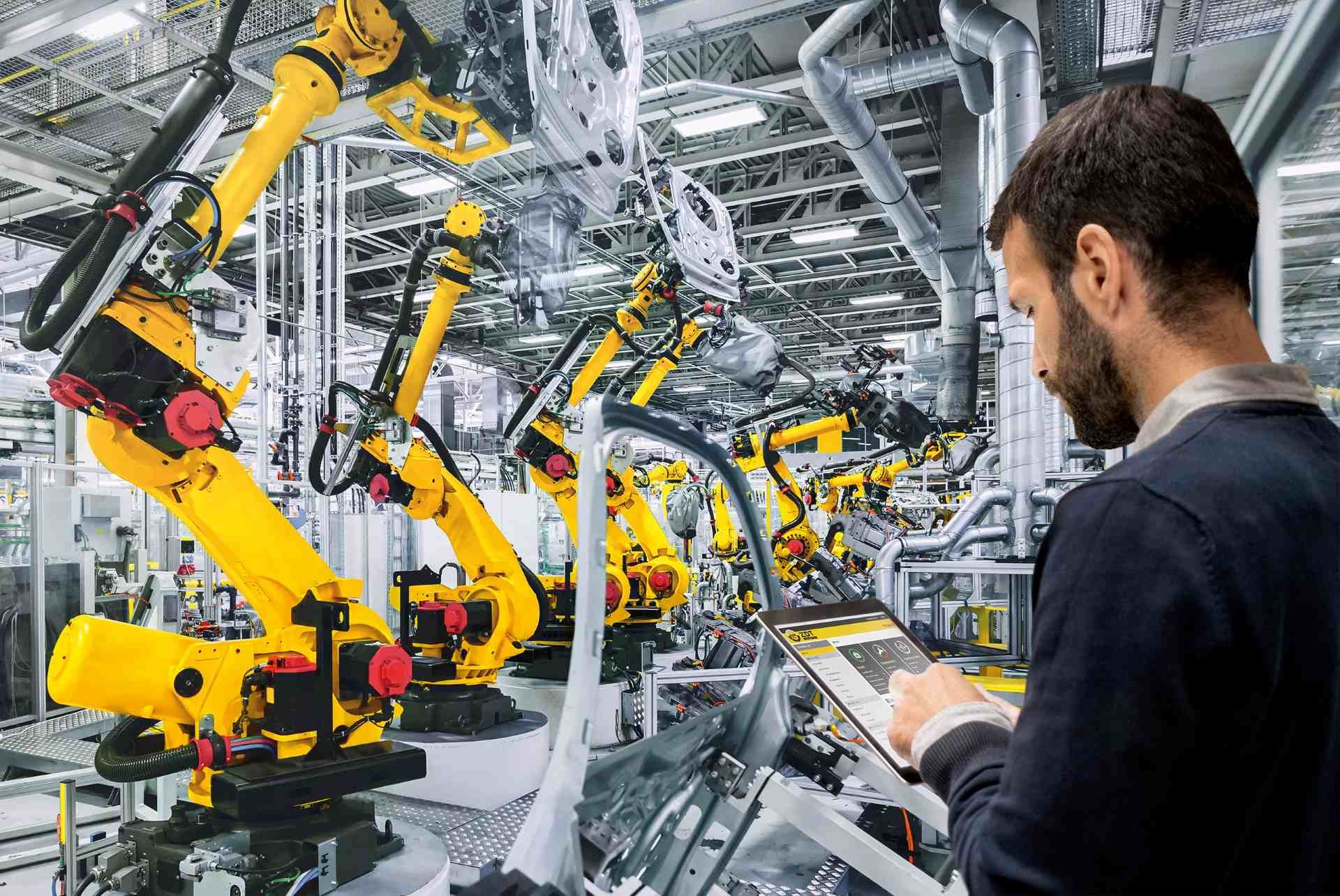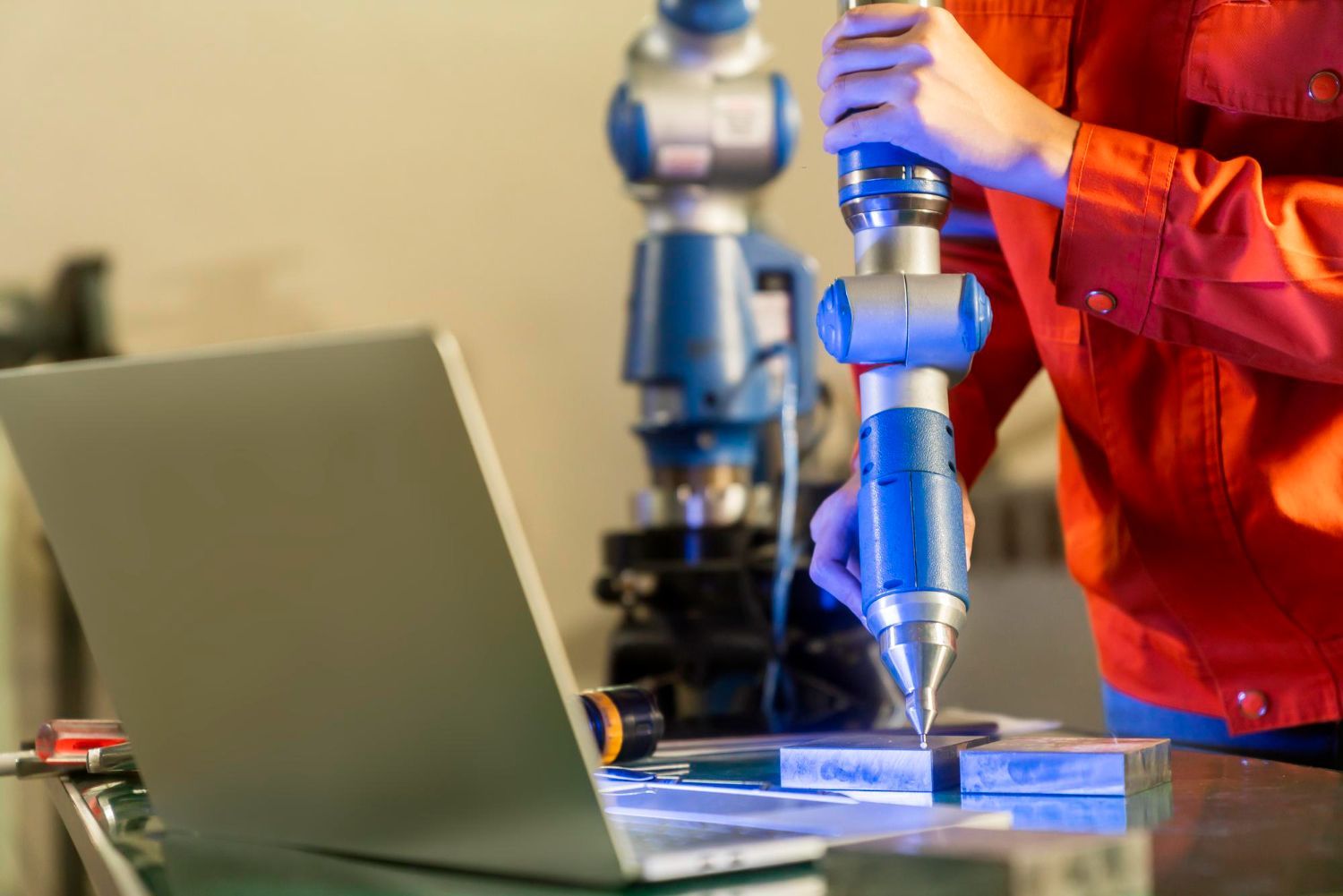What Is Cobot Programming?

Collaborative robots or ‘cobots’ is a rapidly growing field that’s redefining human-robot interaction in the manufacturing industry.
Within this field lies the specialised area of cobot programming, a discipline that breathes life into these tireless mechanical companions, enabling them to work safely and efficiently alongside humans in a shared workspace.
In this article, we’ll dive into the world of cobot programming and explore how it’s shaping the future of the manufacturing industry.
How Are Cobots Programmed?
Like most machines, cobots can be programmed using a variety of techniques. These range from traditional coding languages to more innovative methods like lead-through programming. Lead-through programming is done by a human physically guiding a cobot through a task, allowing it to record the movements to be replicated later.
The flexibility in cobot programming methods makes it accessible to a broader range of users, even those who lack deep programming knowledge.
Do Cobots Require Specialist Programming Skills?
Modern cobots are designed to be user-friendly, with intuitive interfaces that allow workers without specialised programming skills to set up and manage these robots. It isn’t economically viable or efficient for a company to hire a specialised employee only to programme cobots. By making cobot programming simple, even for people who can’t code, it allows access to this innovative technology to a broader market and reduces hesitation in adoption across small and medium-sized enterprises.
What Programming Languages Are Used for Robotics?
Robotics programming utilises a range of languages, though the most common for cobots are Python, C++, and proprietary scripting languages designed by the robot manufacturers. These allow both flexibility to adapt to evolving needs, plus stability and computing power for precise motions and responses. There are also cobots offering graphical, flowchart-style programming which abstracts code into rearrangeable building blocks.
This allows non-programmers to define tasks in an intuitive, visual manner.
Benefits of Cobot Programming
The pivotal aspect of cobots is how they can replace traditional robots as safer, more flexible replacements. Cobot programming delivers critical benefits such as:
- Changes to cobot programming are easier to implement than traditional rigid automation, allowing flexibility to iteratively enhance as needs shift.
- Cobot platforms provide real-time motion adaptation and built-in adaptive systems, allowing you to adjust movements whenever necessary.
- Cobots blend proprietary software and open-source robotics for customisability, allowing organisations to start with pre-programmed functions then specialise according to their own needs.
Future Trends in Cobot Programming
With advances in AI and machine learning enhancing the capabilities of cobots, the future of cobots is limitless possibility.
Technologies are making cobots more efficient and more autonomous, able to learn from their environment and from the humans they work with. We’re also seeing a trend towards more natural ways of interacting with cobots, such as voice and gesture controls, which will make them even more accessible to non-technical users.
Cobot programming is not about replacing human labour with robots. It’s about creating a harmonious partnership between humans and machines, enhancing capabilities, and opening up new possibilities.
If you’re looking to leverage flexible, user-friendly cobots to enhance your manufacturing workflows, our expert team at Cyber-Weld can help. Get customised cobot welding solutions to match your organisation’s needs. Whether you are new to programming or have some existing experience.
Reach out today to get the conversation started around integrating intuitive, safe next-gen automation!

